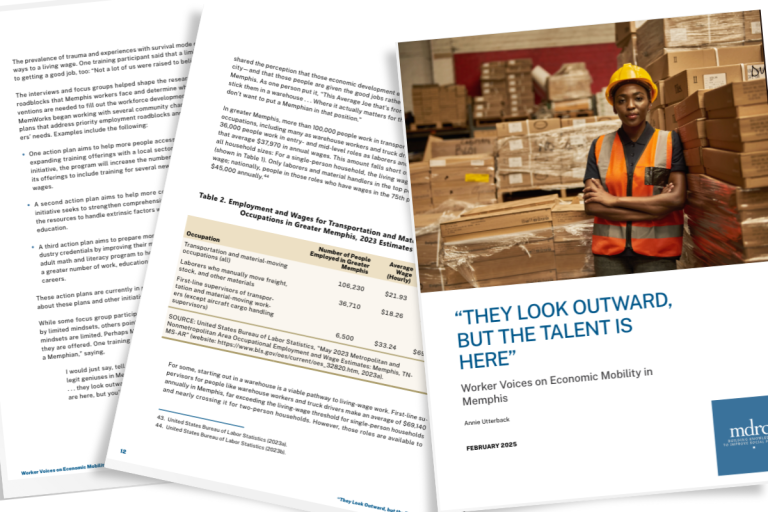MemWorks is about greater understanding, and developing an evidence base to inform how we as a community can work more effectively to address the employment roadblocks facing those experiencing poverty. These emerging insights help us better understand the experiences of tens of thousands of Memphians living in poverty to cut through false perceptions and deal with the facts to help create opportunities for upward economic mobility. While we’re not ready to propose new solutions, we have taken the first step by identifying factors that need to be explored to ensure that Memphis Works for Everyone.
#1 Post-secondary education might not be enough
38 percent of Memphians experiencing poverty have at least some college education. Post-secondary education alone does not seem to be sufficient to help many people access living-wage employment that would lift them out of poverty.
#2 Opportunity youth are disproportionately impacted.
1 in 3 Memphians experiencing poverty are between the ages of 14-25 years old (more than 34,000 youth and young adults.) In addition, the rate of young people in Memphis disconnected from school and work is 1.5x higher than the U.S. average (6th highest among the largest 100 metropolitan areas in the US.)
#3 Labor market participation is lower than anticipated.
Nearly 7 out of 10 people experiencing poverty in Memphis are not employed, compared to only 5 out of 10 in Nashville. For this population, the rate of people who are not working but actively seeking employment is 50 percent higher in Memphis than the average for Tennessee.
Sources
1) 2019 American Community Survey, United States Census Bureau (2019 data was selected to remove the effects of Covid-19).
2) 2022 Measure of America: Youth Disconnection Series, Social Science Research Council.





